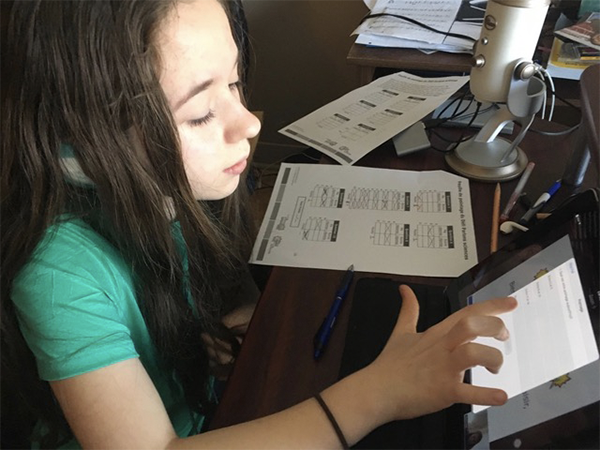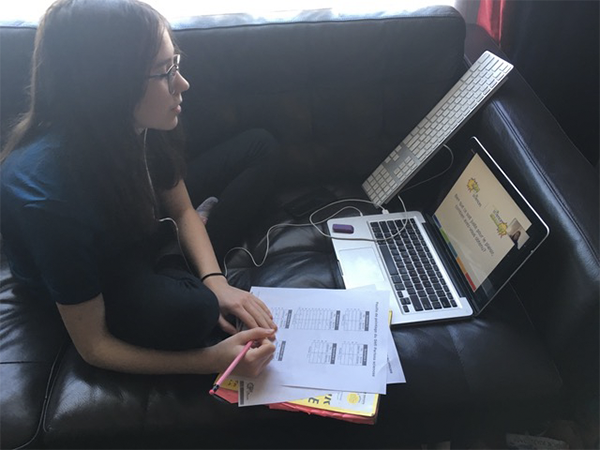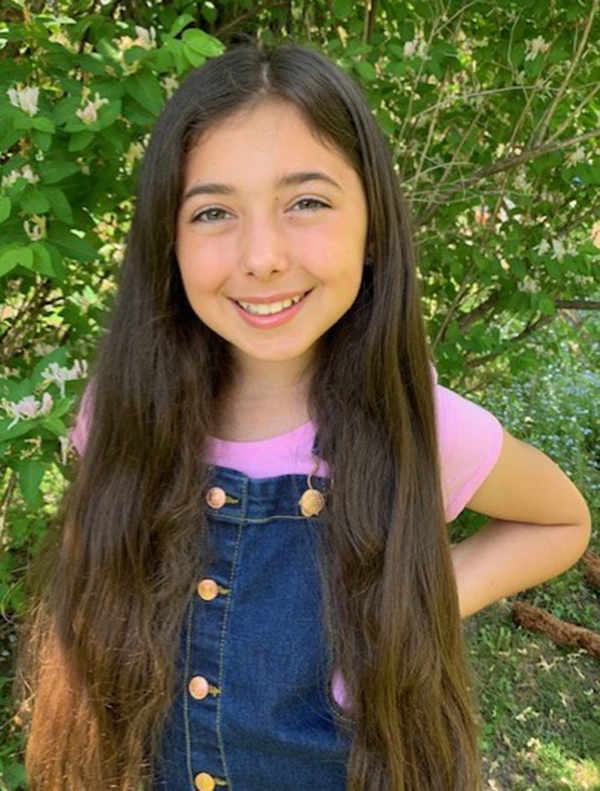Exploring STEM at Home
Science is everywhere. You don’t need a fancy lab to teach it. In fact, a kitchen can become a classroom. With the right ingredients, kids can learn how to make an egg float, get raisins to dance in soda pop, and build a marshmallow structure that will support weight.
These are some of the activities and resources included in the Kitchen Science Showdown, a Let’s Talk Science learning resource collection, designed to teach you about learning with food. This was one of the many learning resource collections on the STEM at Home page, one way Let’s Talk Science responded to the needs of families during an upended year for education.
In late March and early April of 2020, Let’s Talk Science polled parents and educators to learn about their needs during the pandemic.
Parents were looking for ways to engage their children while balancing working from home. They were most interested in short activities that kids could do on their own. Many wanted interactive activities (like games and experiments), and ways for their children to interact with educators or other experts.
Meanwhile, educators were already in contact with and distributing resources to their students. They, too, were seeking short, hands-on activities to share with students at home.
Embracing Online Opportunities
With in-person programs in limbo, Let’s Talk Science expanded its online programming for educators, created new opportunities for youth, and launched an entirely new online section on its website for families.

STEM at Home gave parents and caregivers meaningful ways to keep their children exploring STEM. The initiative enabled youth to discover hands-on activities using common household items, watch engaging web series or videos curated by subject, and participate in cool competitions.
After listening to the needs of parents and caregivers, Let’s Talk Science launched a weekly newsletter that serves up hands-on activities and resources to over 900 recipients.
Activities on the website were organized by age and family-friendly themes, like space and dinosaurs.
More than 50 partners promoted the STEM at Home resources, including governments, school boards, teachers’ associations, and community and post-secondary groups. Several of Let’s Talk Science’s financial supporters also shared STEM at Home with their employees.
Expanding Partnerships
Building on the many collaborations already in place, Let’s Talk Science was able to offer even more novel learning resources.
For example, our partnership with Shaftesbury (who previously produced the Emerald Code series) grew to develop a new online series, The Solutioneers. The Solutioneers follows a group of 12-year-old girls who use coding, robotics and technology in their everyday lives. It’s engaging and empowering, as these girls work together to change the world using STEAM (science, technology, engineering, arts, and math). The series expanded to include a suite of complementary videos. One, Future Minds, showcases real youth doing scientific research. Another, MakerSpace, supports doing robotics at home.
Let’s Talk Science also teamed with Exploring By The Seat of Your Pants to showcase their video field trips, The Tech Bandits to dive into makerspace technology, and The STEAM Sisters to highlight their weekly adventures. All are aggregated on a new STEAM partners page.
Moving the Let’s Talk Science Challenge Online
Anything that highlights the use of STEM beyond the classroom, helps kids to better understand its importance in real life and the workplace. The Let’s Talk Science Challenge helps youth connect STEM around us while fostering their scientific literacy.
Two dozen English and three French Let’s Talk Science Challenges were cancelled because of COVID-19. In their place, Let’s Talk Science transitioned these in-person competitions into a series of online events and engineering design challenges for students in Grades 5-8.

“I wanted to take a minute to thank you and your team again for making such an amazing effort in producing the French Challenge online,” wrote Carrie Agapie, a parent of two daughters who participated in the French Online Challenge. “The program succeeded in making the learning of science fun. You kept the kids engaged and coming back, week after week, all while encouraging them to develop a greater love and appreciation of STEM subjects.”
Every week in the spring, 400-550 youth participated in the eight-week online challenge. It included a high energy STEM quiz show and an engineering design challenge (based on the week's topic) where students posted their STEM creations. The challenge ended up attracting participation from students in regions that hadn’t been served by previous in-person events.
“I love the energy and the enthusiasm for science that is evident in the presenters, and is therefore likely to transmit to the next generation,” said Agapie. “The use of interactive survey questions, visual countdowns, and game board transitions were big factors in making the time engaging and keeping the students captivated.
With demand from participants, the weekly challenge evolved into a summer series called Brain Busters. Let’s Talk Science is now considering ways to maintain an online challenge in future years to serve this new, broader audience.
Let’s Talk Science hosted over 40 online Let’s Talk Science Challenge quizzes, engineering challenges, and summer Brain Buster quiz shows, with nearly 5,600 youth registrations.
Careers Competitions
In the spring, students from Grade 5 to 12 were challenged to propose a likely future career concept for the next That’s a Real Job video. To launch the competition, Let’s Talk Science developed a promotional video that showcased some of the previous videos in the That’s a Real Job series (e.g. 3D organ designer, robotics engineer) and encouraged youth to think outside the box and come up with a future career idea of their own. This video was viewed to completion over 2 million times.

The That’s a Real Job contest received entries like stem cell developer, space waste manager and planet designer. The grand prize winner was Grade 5 student Alixandria Casullo, from Richmond Hill, Ontario, who proposed the role of an artificial intelligence ethical counsellor.
“They’ll look at codes and see if there’s any bias in them. In the future, we’ll use a lot of robots and AI,” says Alixandria.
At school, she likes astronomy and coding, and she understands that science can come into play in any job, current or imagined. “You never know what job you’ll have, so it’s important to know everything,” she says.
Let’s Talk Science will turn Alixandria’s inspiration into a future That’s a Real Job video, and use it in a national marketing campaign to help more youth think outside the box about their futures.
These STEM-related jobs aren’t science fiction. They’re real jobs or they will be soon. Let’s Talk Science keeps coming up with new ways to get youth to think about STEM careers and their futures.